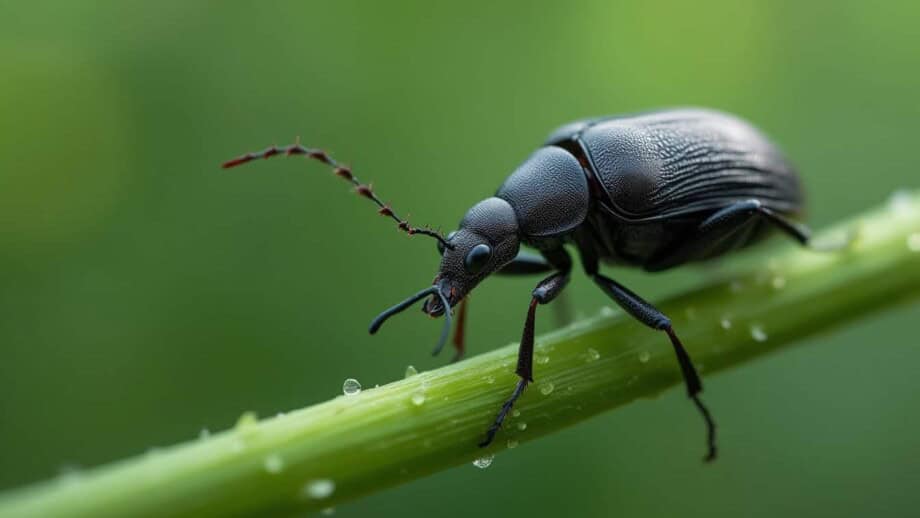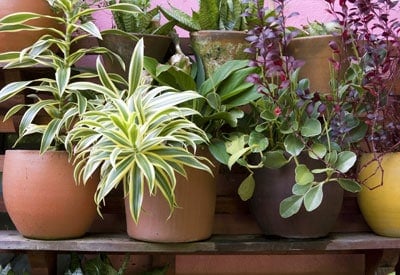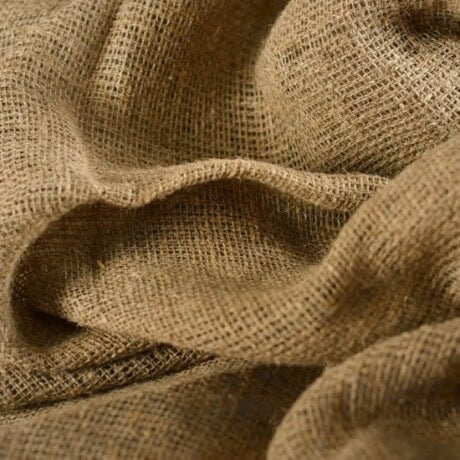Black Vine Weevil
Learn how to identify and control black vine weevils using time-tested, organic and natural techniques.

A pest throughout most of the United States, black vine weevils (Otiorhynchus sulcatus) attack over 100 different kinds of ornamental plants including rhododendrons, azaleas, yews and hemlocks. When weevils enter your house, greenhouse or indoor gardens they can be damaging to begonias, ferns and other popular potted plants. They are particularly damaging to cyclamens and are often called the “cyclamen grub.”
Identification
Adult black vine weevils (3/4 inch long) are large slate-gray to black insects that cannot fly. They have short, broad snouts, bent or “elbowed” antennae and patches of short hairs on their wings. Adults feed at night, damaging plants as they chew small notches in the edges of leaves. During the day, they hide in soil cracks, garden debris and mulch.
Larvae cause the greatest level of injury to plants. They are small (1/2 inch long), white, C-shaped grubs that tunnel through roots as they feed. Leaves will often wilt (even when properly watered) and plants may be stunted or die. Larvae may also girdle the main stem just below the soil line.
Life Cycle
Black vine weevils overwinter as nearly grown larvae in the soil around the roots of host plants. In spring they change to pupae and begin emerging as adults. In two or more weeks (depending on temperature) they begin depositing eggs near the crowns of the host plants. Hatching occurs in about 10 days, and the tiny larvae burrow into the soil and begin feeding. One generation per year.
Vine Weevil Control
- Remove mulch and other hiding places from around plants and water only when necessary (larvae and adults prefer moist soil).
- As non-flying insects, weevils travel from plant to plant by walking. It stands to reason then, that Tanglefoot Sticky Barrier should form the first line of defense.
- Apply 100% organic Diatomaceous Earth for long-lasting pest protection. Made up of tiny fossilized aquatic organisms, DE kills by scoring an insect’s outer layer as it crawls over the fine powder. Contains NO toxic poisons!
- Immature stages of the black vine weevil are particularly vulnerable to attack by beneficial nematodes, especially in potted plants.
- BotaniGard ES is a highly effective biological insecticide containing Beauveria bassiana, an entomopathogenic fungus that attacks a long-list of troublesome pests – even resistant strains! Weekly applications can prevent insect population explosions and provide protection equal to or better than conventional chemical pesticides.
- Fast-acting crack and crevice sprays, like Don’t Bug Me, can be used around windows, doors and vents to prevent adult weevils from entering structures.
- Least-toxic botanical insecticides should be used as a last resort. Derived from plants which have insecticidal properties, these natural pesticides have fewer harmful side effects than synthetic chemicals and break down more quickly in the environment.
Tip: Place burlap fabric at the bases of trees and shrubs to trap weevils that hide under it during the day.

















